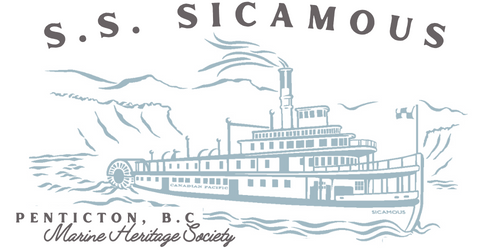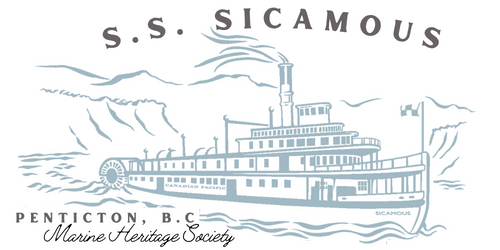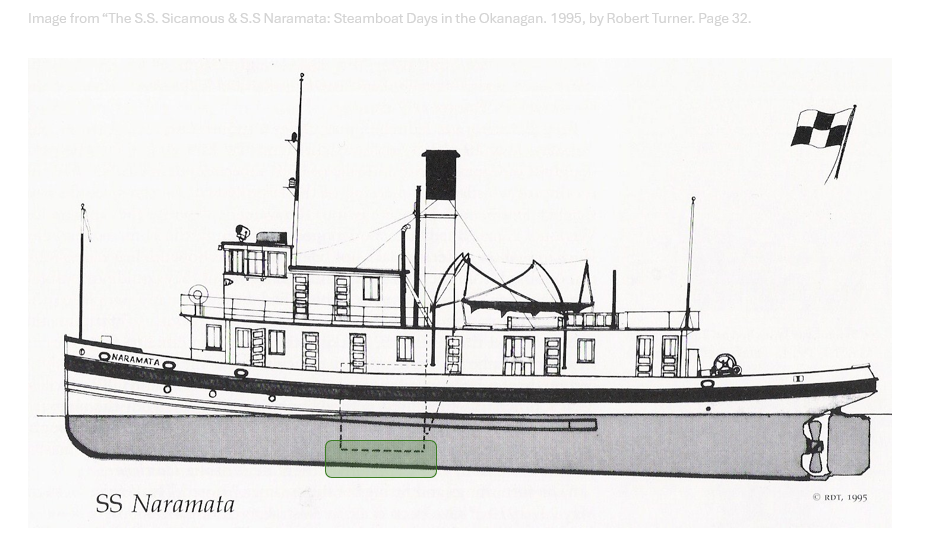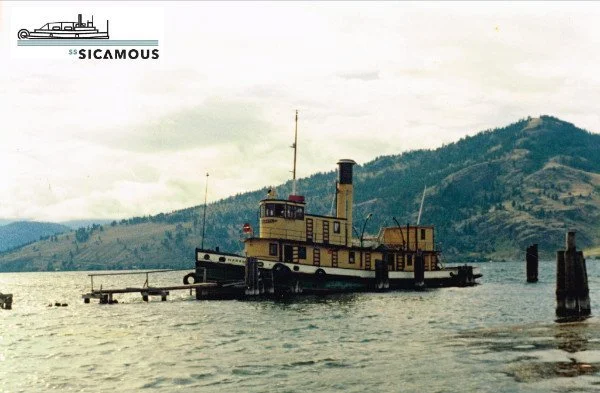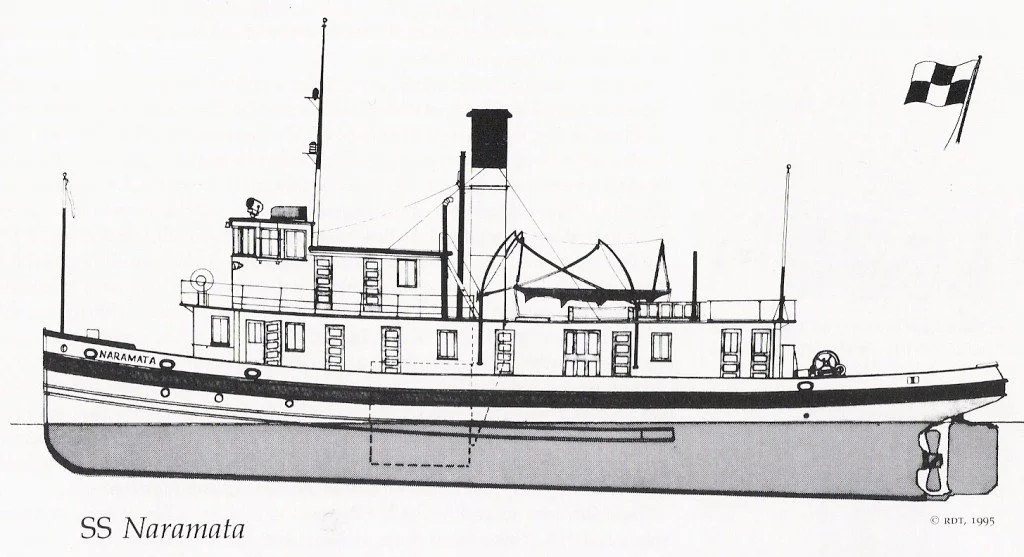Preserving the S.S. Naramata
The SS Naramata: Preserving Canada's Last Freshwater Steam Tug
The S.S. Sicamous Society is committed to safeguarding the S.S. Naramata tugboat for future generations. Currently, the hull is buried deep in the sand, and we are working to raise the vessel above the water table. This crucial step will prevent water from seeping into the interior, allowing us to better maintain and preserve the steel structure.
This ambitious project requires specialized expertise, and due to its unique nature, we must first conduct a series of preliminary studies to accurately estimate the total costs. We are actively fundraising to support this effort, as without it, the S.S. Naramata faces the risk of irreversible damage. Your support is vital to ensuring the longevity of this historic vessel.
Preserving the S.S. Naramata: Why Story is Far from Over
The damaged section of the hull is very small compared to the areas that remain intact (refer to the green-highlighted section in the diagram below). The intact portions of the hull are well-preserved, thanks to the same cathodic protection system that safeguards the hull of the S.S. Sicamous. While this system is less effective in areas exposed to internal water, it successfully protects the rest of the vessel. This is why raising the tug is crucial—it will allow us to address and protect the damaged regions, which are located at the very base of the hull near the coal storage and are currently inaccessible.
It's important to note that the damaged areas are not open to the public and are also out of reach for the Sicamous Society until the vessel is raised. Meanwhile, the superstructures of the ship remain stable. Even if lifting the vessel proves challenging, the Naramata still has the potential to serve as a historic site for many decades, possibly lasting another hundred years.
The damaged section of the hull is very small compared to the areas that remain intact (see the green highlighted section above). The damage is in the mid section of the ship, under the coal storage and boiler. The intact portions of the hull are well preserved thanks to the same cathodic protection system that safeguards the hull of the S.S. Sicamous. If lifting the vessel proves challenging, the Naramata still has the potential to serve as a historic site for many decades.
Did you know? Even though its in the ground, the Naramata still floats when the water table is high! This shows that the vessel retains buoyancy and is structurally intact. We are hoping to use this knowledge to raise the tug.
Naramata Tug Boat in the water, shortly before her journey to Penticton. Although the SS Naramata will never return to the lake, she still has immense value as a connection to our past.
Project: Float the Boat
-
Step One
A Marine Surveyor will visit to inspect the tug and establish accurate project costs.
-
Step Two
Remove the chain link fence and build a "berm" (waterproof retaining wall).
-
Step Three
Fill the berm with water to create an above ground pool. The Naramata will float to the top.
-
Step Four
Pump lots and lots of gravel under the hull of the Naramata while it is floating.
-
Step Five
Remove the water, the Naramata will sit on the newly added gravel. It will now be well above the water table.
-
Step Six
Remove the berm. The project is now complete.
Why the S.S. Naramata should be raised:
The S.S. Sicamous Society is dedicated to preserving the S.S. Naramata, and raising the tugboat above the water table is a critical step in that mission. There are many reasons to pursue this project, including the following benefits:
Prevents water from entering the hull: By raising the vessel above the fluctuating water table, we will prevent water from seeping into the hull during high water levels. This will protect the steel structure, ensuring the long-term durability of the tugboat.
Enhances the effectiveness of the cathodic protection system, reducing the risk of corrosion: The cathodic protection system, which helps shield the steel hull from rust and deterioration, will function more effectively once the vessel is raised. Keeping the interior hull dry and above the water table will maximize the system’s ability to prevent corrosion, preserving the Naramata’s steel exterior for generations to come.
Preserves the vessel's structural integrity, allowing the hull to be preserved at minimal cost: Lifting the Naramata ensures that the rest of the hull remains in good condition without requiring costly interventions later. By protecting the structure from further damage, The Sicamous Society will avoid future repairs and ensure that the vessel can be maintained with fewer resources.
Improves accessibility for maintenance: Raising the tug will provide better access for volunteers to conduct inspections, cleaning, and maintenance. This will make routine upkeep more efficient and cost-effective, ensuring the ship remains in good condition for the long term. It also allows for better monitoring of the hull’s condition, reducing the likelihood of unnoticed damage.
Increases park space by allowing the removal of the surrounding fence: Once the vessel is lifted and better protected, the need for the chain-link fence will be eliminated. This will open up more public space, creating a more welcoming and open environment in the park for visitors to enjoy.
Makes the hull more visually appealing, contributing to a more picturesque environment: With the fence gone and the tugboat raised above the sand, the Naramata will become a more visually striking and prominent feature of the park. This not only enhances the aesthetic of the area but also offers more picturesque views, making the vessel a more attractive landmark for locals and tourists alike.
Improves security by controlling access to the vessel: Raising the Naramata will create a natural barrier, making it harder for unauthorized visitors to access the vessel. Controlled access via stairs will allow for safer and more secure management of visitors, enhancing security while still making the vessel an accessible historical landmark.
Plan of the Naramata Tug Boat, showing the depth of the hull now submerged in the soil – By Robert Turner
